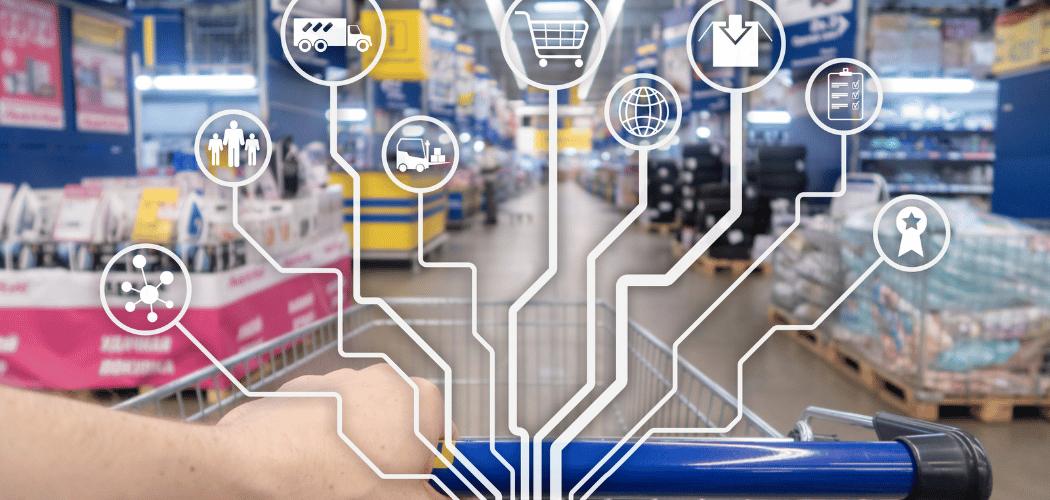Amazon’s Holiday Kickoff Event Reveals 9 Retail Lessons
Prime Big Deal Days was expected to generate $8.1 billion for Amazon. The two-day sale also delivered something for other retailers: nine big insights for the holidays.
By Jenn McMillen
There was a major run on protein shakes and AA batteries earlier this month. If there’s one indication of the opportunities Amazon Prime Big Deal Days presented to shoppers, these purchase choices might be it.
Premier Protein Shakes and Amazon Basics batteries were in fact the two top-selling items during the retailer’s projected $8.1 billion Big Deal Days event on Oct. 10 and 11, CNBC and Numerator reported. Small appliances, not so much – they came in last. (Amazon Fire TV sticks, Liquid I.V. Hydration Packs and Energizer AA batteries rounded out the top-five list.)
All of which suggests that this year’s holiday shopper is more focused on immediate needs, shrewder about discounts and apparently, more likely to buy many toys or own a lot of remote controls. Above all, consumers are more conditioned to expect the prices on whatever items they’ve got their eyes on to drop.
In the weeks after the sales event, retailers should be strategizing around this important takeaway.
9 Big Deal Day Takeaways
Here’s what else retailers can learn in the aftermath of Prime Big Deal Days, during which Amazon said it sold hundreds of millions of items. These nine findings, in the days after the event, could say a lot about how consumers are strategizing their holiday budgets.
- Small ticket items are a big hit. Batteries, protein shakes and Amazon Fire TV sticks have something in common other than being among the top items purchased over Prime Big Deal Days. Turns out 60% of all products that sold were less than $20, while just 4% were more than $100, Numerator reports (Firesticks were marked down to $19.99 from $39.99). The average order size was $53.47, yet 52% of all orders averaged $30 or less. This suggests most orders were for two, maybe three, items.
- Shoppers tended to be more “trippy.” Still, those small orders added up, as the lure of deals inspired multiple return trips. More than half of participating households, 55%, placed two or more separate orders during Big Deal Days, and 11% placed at least five orders. Those comebacks raised the average household spending to nearly $125. Retail Dive reports. And 72% of Deal Days customers also shopped on Prime Day in July. The takeaway: A few, major sales events each year, with lots of promotional hoopla, are likely to be taken seriously.
- Millennial memberships are a majority indicator. Prime Big Deal Days shoppers were typically between the ages of 35 and 44, reflecting the dominant holders of Prime memberships. Nearly 77% of the more than 72 million U.S. millennials and 79.7% of bridge millennials (those born between 1980 and 1989) are Prime members. So Big Deal Days purchases may serve as a bellwether of this market’s priorities. Retailers may want to consider paid memberships with competitive benefits: 70% of millennials are willing to pay for premium loyalty membership programs, Oracle has found.
- It’s forcing more innovative competition. Walmart, Target, Best Buy and other retailers launched rival sales events, some of which lasted longer than Prime Big Deal Days and featured stand-out elements. Target is encouraging loyalty by sponsoring a “Deal of the Day” from Oct. 1 through Dec. 24 (for enrolled Target Circle members), and Kohl’s brought back its monthlong “Bricktober” event, with weekly deals on Lego sets. Not surprisingly, 55% of Prime Big Deal Days shoppers compared prices with other retailers before hitting “buy.” Events within events hold promise.
- People are “meh” about electronics. Perhaps consumers just haven’t been wowed by shiny objects, because when tracking Amazon’s sales events over the past five years, purchases of consumer electronics have steadily declined, Numerator reported in September. Just 29% of summer Prime Day shoppers purchased electronics in 2023, compared with 42% in 2019. And during 2023 Prime Big Deal Days, only 15% of shoppers purchased consumer electronics. The category might need fresh innovation; perhaps the U-Scan “hands-free urine lab,” a toilet pod to gauge what’s in your urine and course-correct, discovered by Smithsonian Magazine?
- Deal Days deadlines were made to be broken. After Prime Big Deal Days ended, Amazon continued to feature a “Holiday Deals” page on its website, with substantial markdowns on more than 150 items (as of Oct. 24), including the iRobot Roombia i4 (48% off) and second-generation Apple AirPods (23% off). Lots of shoppers probably suspected this would happen and put off Big Deal Days buys in hopes prices would drop even more. Perennially on-sale retailers have conditioned this thinking. Take Macy’s “lowest prices of the season sale,” through Oct. 31. Shoppers might expect the prices will be lower in November.
- Personalized deals are more competitive. Amazon invited Prime members to sign up for invite-only deals on items expected to sell swiftly, a tactic that probably locked in a lot of early purchases. It also showed its customers deal suggestions based on their browsing and purchase histories, as well as on items saved in their favorites lists, PYMNTS reports. Amazon further tailored its deal announcements by channel – those with Alexa devices could receive alerts on eligible items up to 24 hours in advance.
- A 48-hour sale can be positive PR. In the face of a Federal Trade Commission lawsuit that alleges Amazon “prevents current competitors from growing and new competitors from emerging,” Amazon positioned Prime Big Deal Days as a boon to its small business partners. In particular, Amazon cited several of its independent clients and sellers, including Clean Skin Club and Hula Home. Their goods, according to Amazon, were among the top-selling products in the U.S., PYMNTS reported. Consumers are more likely to trust giant retailers that not only carry independent and local brands, but champion them.
- Speed continues to influence sales. On the first day of Prime Big Deal Days, U.S. Prime members bought more than 25 million items using same-day or next-day delivery. Amazon delivered hundreds of thousands of those purchases within four hours of their order time. The fastest delivery – 54 minutes – included a KitchenAid pasta attachment, in Ohio. Such nail-biting turnaround in peak season comes at a cost, however, not just in dollars but in its toll on drivers. Retailers might consider other customer perks that will reduce costs for everyone.
Retails’ Race To Events May Become Non-Events
The biggest takeaway remains the same, however: Shoppers have been conditioned not to pay full price.
This has generally been the state of retail for some time. The difference today is that the choices, for consumers, keep expanding, including apps that tailor deals on demand, customer-specific prices, smart devices that tell you when to buy something, pop-up promos, faster delivery, you name it.
If anyone needs back-up batteries and extra protein this holidays season, it’s retailers.
This article originally appeared in Forbes.
Forbes.com retail contributor Jenn McMillen is nationally renowned as the architect of GameStop’s PowerUp Rewards, and is Founder and Chief Accelerant of Incendio, a firm that builds and fixes marketing, consumer engagement, loyalty and CRM programs. Incendio provides a nimble, flexible and technology-agnostic approach without the big-agency cost structure and is a trusted partner of some of the biggest brands in the U.S.





